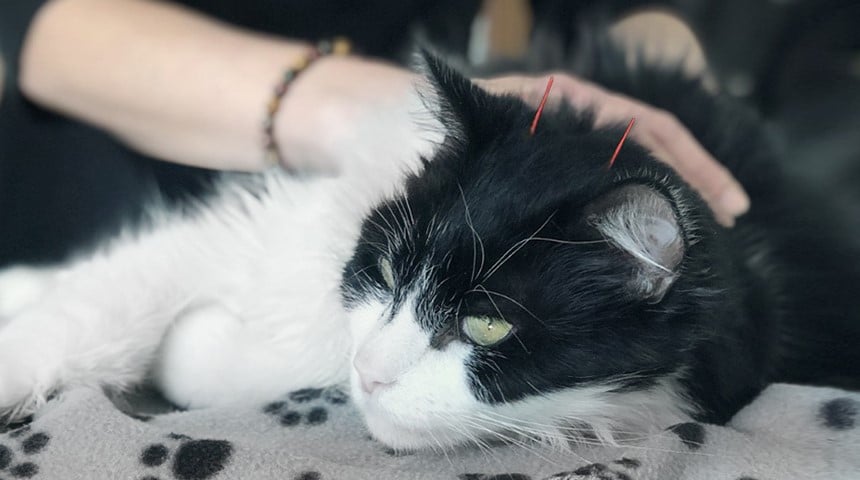Acupuncture is a practice that has been used for thousands of years in traditional Chinese medicine. It arrived in the West in the 19th century and has been used in veterinary medicine for several decades. It was first used on humans and horses, but is now recognized for dogs and cats.
Several scientific studies have backed up its benefits. These scientific studies are conclusive: acupuncture is an additional tool to conventional medicine, especially when the latter is less effective.
Why seek a consultation in acupuncture?
Acupuncture is mainly used for chronic pain, but can also be used for behavioural, neurological, myoarthroskeletal, digestive, and metabolic conditions. If in doubt, you can always discuss with your veterinarian whether acupuncture could be suitable for your pet.
How does it work?
Acupuncture involves inserting tiny needles into specific acupuncture points to stimulate the blood, immune and nervous systems. These acupuncture points are carefully identified and selected for each individual animal.
What happens during an acupuncture session?
Before inserting the needles, your veterinarian will assess your pet’s medical history, then performs a complete examination, checking for pressure points and pulses. They will observe the animal and answer any questions clients may have. The veterinarian listens to the needs of each of their patients, and of their clients. They may also refer the patient to a traditional medical consultation if this is deemed more appropriate for the patient.
The needles are left in place for around twenty minutes, depending on the animal’s tolerance. Some animals will feel a little discomfort when the needle is inserted, but they often feel much calmer during the treatment and for hours afterwards. Some animals even fall asleep during the consultation! The consultation lasts an hour on average.
Are there any side effects to be expected?
Serious side effects are extremely rare. Those that have been reported include: minor local bleeding when the needle is withdrawn but which ceases quickly, slight discomfort or weakness at the needle insertion site which disappears in the days following treatment, local infection, or simply a lack of effectiveness. However, the benefits are often far greater than the side effects, and in the end, animals feel much better after acupuncture treatments.
What about the benefits?
The benefits of acupuncture will last from a few days to a few weeks. For the first few treatments, we recommend once a week for 4 weeks, then as needed, depending on the animal’s responsiveness. Your veterinarian will be able to prepare a personalized plan for each animal.
Dr. Catherine Malouin v.m., IPSAV



